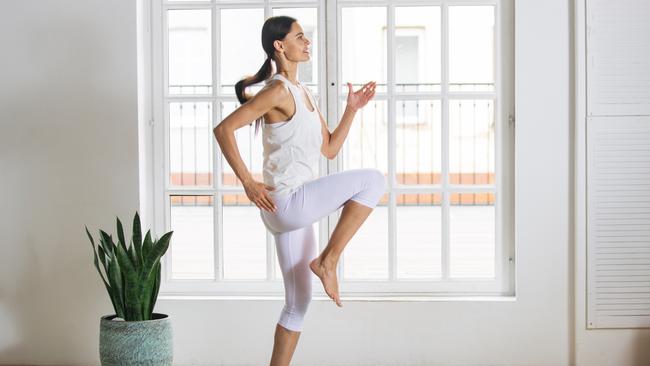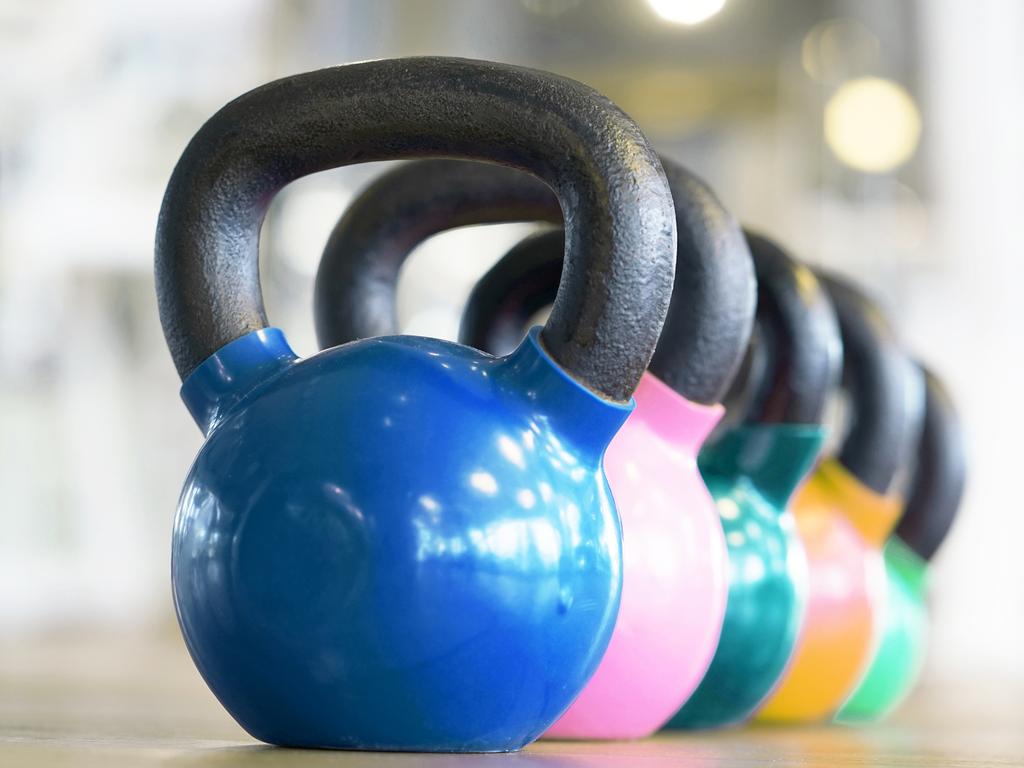How to huff, puff and blow away Covid padding, no equipment needed
Even scientists approve this old-fashioned bodyweight exercise routine you can do at home.

Here’s a workout you can do in your own home, no equipment needed. All that is required to participate in the exercise program even scientists say will get you fit in months is the self-motivation to get yourself off the sofa and a total of 11 minutes of your time, which includes the warm-up and cool-down. Based on old-school bodyweight exercises — or calisthenics — performed as a circuit with a short time to catch your breath between each burst, it is guaranteed to get you huffing and puffing, but with good reason.
It’s not news that hauling about your own body weight is good for you. Studies have repeatedly shown that moves such as squats, lunges and push-ups improve power and muscular strength or that interval-style workouts offering just a brief breather between bouts of effort can, over time, boost endurance capacity. Yet most published studies have assessed the effects of such training on athletes or in laboratory settings using equipment such as stationary bikes and treadmills.
So Martin Gibala, a professor of kinesiology at McMaster University in Canada, was curious to find out whether a back-to-basics circuit might boost aerobic fitness levels of even the most sedentary beginner in the same way a run or cycle outdoors might — but without them having to leave their living room.
“Studies involving bodyweight training date back many decades, but overall there has been limited research on it compared to more traditional laboratory-based investigations involving specialised equipment,” he says. “There have been some recent studies looking at protocols that combine bodyweight training with equipment-based exercise such as kettlebells and rowing ergometers and others involving extremely demanding ‘all-out’ effort, such as HIIT and Tabata, which have shown improvements in strength as well as fitness.”
However, Gibala says such findings aren’t always relevant to the average home-based exerciser (that is, you and me), so for his new study in the International Journal of Exercise Science he set out to evaluate the effects of an 11-minute circuit on 20 healthy men and women in their 20s, all of whom were largely sedentary and had a low fitness base.
After assessing their initial fitness, Gibala asked half the participants to follow a program loosely based on the approach of 5BX — or “five basic exercises” — training. This was developed in the 1950s to help Royal Canadian Air Force members stationed in remote outposts to stay in shape (the Duke of Edinburgh was reportedly a devotee). Meanwhile, the remaining participants made no changes to their usual activity (or, to be more accurate, inactivity).
For those who might have felt at the time that they had picked the short straw, the fitness regimen involved an updated version of a classic circuit session: a minute of jumping jacks to warm up, then the rudimentary circuit of 60 seconds each of no-push-up burpees, high-knee on-the-spot running (twice), alternate leg split squat jumps and squat jumps with every bout interspersed with 60 seconds of walking on the spot. The researchers stressed that they didn’t expect the “all-out” effort usually required in intense interval training and HIIT workouts.
Three times a week for six weeks the participants repeated the circuit, working for a manageable (surely even to the least compliant exercisers) 33 minutes a week — and were instructed simply to “challenge” themselves to complete as many repetitions of each move as they could in the allotted minute. Apart from that, no other changes were made to their usual lifestyle habits.
At the end of the trial, “Fitness was determined using a gold-standard ‘peak oxygen uptake’ test”, Gibala says. This measures the body’s ability to transport and utilise oxygen.
“It showed the absolute increase in fitness in the training group was around 7 per cent, which, although relatively modest, is important as even small changes can be beneficial given the association between fitness and the risk for mortality and developing chronic diseases.” Leg power had also improved, although overall strength remained unchanged.
His study was small and of relatively short duration, but he suspects that if the routine were continued for longer, there would also be measurable improvements in body composition, strength and other health-related markers.
A comprehensive 2019 study by researchers at Liverpool John Moores University showed that 12 weeks of home-based bodyweight training reduced body fat by about 4 per cent, which Gibala says is “similar to the effects of moderate-intensity continuous exercise that involves a higher time commitment” such as running, cycling or swimming.
“We feel our study provides a reminder of the value of simple ‘old-school’ exercises that are based on classic principles of physical education,” Gibala says. “It is a message that really seems to resonate with many individuals, given the reality of stay-at-home orders and limited access to fitness facilities and equipment.”
Gibala’s findings couldn’t be more timely as there are signs that many people are growing weary of working out at home. In Sport England’s most recent Active Lives survey, published in October, there was a 10 per cent drop in the number of “active” 16-34-year-olds — those who manage the recommended 150 minutes a week of activity — since the pandemic started. Only 56 per cent of 55-74-year-olds were considered active in 2020 (compared with 63 per cent in 2019) and among those aged 75 and above, activity levels have also dropped sharply (by 6.6 per cent), with the proportion of this age group now classified as “inactive” rising to more than 50 per cent for the first time.
And, despite the stampede to buy fitness accessories among those with an existing gym habit, the reality remains that if a workout requires equipment, the unfit are less inclined to try it. “We have recently conducted a study looking at the barriers to getting fit, and equipment — or lack of it — is a major barrier,” says Richard Kerwin, a researcher in health and physical performance in the school of biological sciences at Liverpool John Moores University. “People are very good at finding excuses not to exercise and a fitness program that requires no equipment removes that particular barrier and improves chances of adherence.”
Will it work for everyone? Gibala says some people — including those with vulnerable joints and backs and existing injuries — will need to make modifications. He had already made changes, such as removing sit-ups from the original 5BX line-up, because they have fallen out of favour in the exercise world (they are thought to strain the back if performed incorrectly), but says other omissions and changes are optional.
“Walking in place or stepping up and down on a single step, holding a railing for balance if you need to, can reduce impact forces as compared to running in place or jumping exercises,” he says. “Another option is to reduce the range of motion by performing ‘shallow squats’ or placing a box on a chair to limit the depth of the sitting movement. There are adaptations for most exercises.”
He says three weekly 11-minute circuits will meet the recommended twice-weekly strength training for adults, but that we would still need to aim for 150 minutes a week or more of moderate-intensity activity to stay healthy.
For lockdown at least, the 11-minute home circuit is hard to beat. “Like interval training in general, which has been practised by athletes for over a century and is nothing new, we tend to continually ‘rediscover’ the potency of bodyweight exercises from time to time,” Gibala says. “A lot of people are interested in the latest trend or want to try the latest equipment on the market to continually introduce variety or see if there is a ‘new’ method that might yield better results, but the value of a simple bodyweight circuit cannot be overlooked.”
Perhaps the best proof it works is that the professor himself is a fan. “I exercise on most days of the week,” Gibala says. “And I regularly incorporate a bodyweight circuit in my own fitness regimen.”
The Times
-
How to do the 11-minute lockdown circuit
Light version
Warm up with a minute of walking on the spot. Then perform 60 seconds of the following exercises, in order:
1. Slow-paced mountain climbers (this is like marching on the spot, bringing knees to elbows, while in a horizontal, high press-up position)
2. Walking on the spot
3. High-knee brisk marching on the spot, pumping arms and moving as vigorously as is comfortable
4. Walking on the spot
5. Shallow leg lunges
6. Walking on the spot
7. Marching on the spot
8. Brisk marching
9. Shallow squats
10. Walking on the spot to cool down
Classic version
Warm up with a minute of jumping jacks. Then perform 60 seconds of the following exercises, in order:
1. Burpees without press-ups
2. Marching on the spot
3. High-knee running on the spot
4. Marching on the spot
5. Split squat jumps in alternate legs
6. Marching on the spot
7. High-knee running on the spot
8. Marching on the spot
9. Squat jumps
10. Gentle walking on the spot to cool down







To join the conversation, please log in. Don't have an account? Register
Join the conversation, you are commenting as Logout